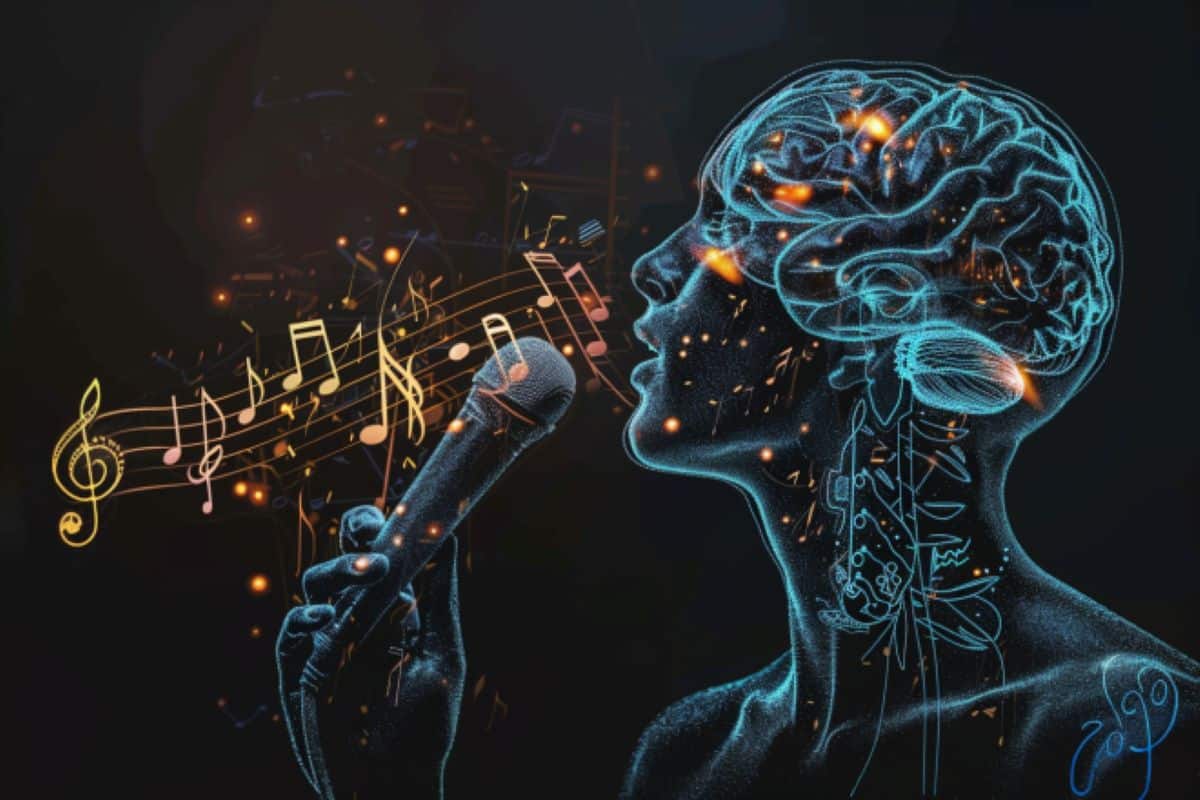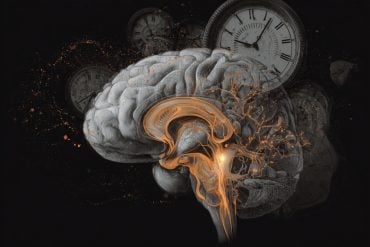Summary: Singing can improve language recovery in stroke patients by repairing the brain’s language network. This positive effect is attributed to increased grey matter volume in language regions and improved connectivity within the network. The study suggests that singing can be a cost-effective addition to traditional rehabilitation methods.
Key Facts:
- Singing increases grey matter volume in language regions of the brain.
- Singing improves connectivity within the brain’s language network.
- Singing is a cost-effective addition to traditional rehabilitation methods.
Source: University of Helsinki
Cerebrovascular accidents, or strokes, are the most common cause of aphasia, a speech disorder of cerebral origin.
People with aphasia have a reduced ability to understand or produce speech or written language. An estimated 40% of people who have had a stroke have aphasia. As many as half of them experience aphasia symptoms even a year after the original attack.
Researchers at the University of Helsinki previously found that sung music helps in the language recovery of patients affected by strokes. Now, the researchers have uncovered the reason for the rehabilitative effect of singing.
The recently completed study was published in the eNeuro journal.

According to the findings, singing, as it were, repairs the structural language network of the brain. The language network processes language and speech in our brain. In patients with aphasia, the network has been damaged.
“For the first time, our findings demonstrate that the rehabilitation of patients with aphasia through singing is based on neuroplasticity changes, that is, the plasticity of the brain,” says University Researcher Aleksi Sihvonen from the University of Helsinki.
Singing improves language network pathways
The language network encompasses the cortical regions of the brain involved in the processing of language and speech, as well as the white matter tracts that convey information between the different end points of the cortex.
According to the study results, singing increased the volume of grey matter in the language regions of the left frontal lobe and improved tract connectivity especially in the language network of the left hemisphere, but also in the right hemisphere.
“These positive changes were associated with patients’ improved speech production,” Sihvonen says.
A total of 54 aphasia patients participated in the study, of whom 28 underwent MRI scans at the beginning and end of the study. The researchers investigated the rehabilitative effect of singing with the help of choir singing, music therapy and singing exercises at home.
Singing is a cost-effective treatment
Aphasia has a wide-ranging effect on the functional capacity and quality of life of affected individuals and easily leads to social isolation.
According to Sihvonen, singing can be seen as a cost-effective addition to conventional forms of rehabilitation, or as rehabilitation for mild speech disorders in cases where access to other types of rehabilitation is limited.
“Patients can also sing with their family members, and singing can be organised in healthcare units as a group-based, cost-efficient rehabilitation,” Sihvonen says.
About this language and neurology research news
Author: Elina Kirvesniemi
Source: University of Helsinki
Contact: Elina Kirvesniemi – University of Helsinki
Image: The image is credited to Neuroscience News
Original Research: Open access.
“Structural neuroplasticity effects of singing in chronic aphasia” by Aleksi Sihvonen et al. eNeuro
Abstract
Structural neuroplasticity effects of singing in chronic aphasia
Singing-based treatments of aphasia can improve language outcomes, but the neural benefits of group-based singing in aphasia are unknown.
Here, we set out to determine the structural neuroplasticity changes underpinning group-based singing-induced treatment effects in chronic aphasia.
Twenty-eight patients with at least mild nonfluent poststroke aphasia were randomized into two groups that received a 4-month multicomponent singing intervention (singing group) or standard care (control group).
High-resolution T1 images and multishell diffusion-weighted MRI data were collected in two time points (baseline/5 months).
Structural gray matter (GM) and white matter (WM) neuroplasticity changes were assessed using language network region of interest-based voxel-based morphometry (VBM) and quantitative anisotropy-based connectometry, and their associations to improved language outcomes (Western Aphasia Battery Naming and Repetition) were evaluated.
Connectometry analyses showed that the singing group enhanced structural WM connectivity in the left arcuate fasciculus (AF) and corpus callosum as well as in the frontal aslant tract (FAT), superior longitudinal fasciculus, and corticostriatal tract bilaterally compared with the control group.
Moreover, in VBM, the singing group showed GM volume increase in the left inferior frontal cortex (Brodmann area 44) compared with the control group.
The neuroplasticity effects in the left BA44, AF, and FAT correlated with improved naming abilities after the intervention.
These findings suggest that in the poststroke aphasia group, singing can bring about structural neuroplasticity changes in left frontal language areas and in bilateral language pathways, which underpin treatment-induced improvement in speech production.






